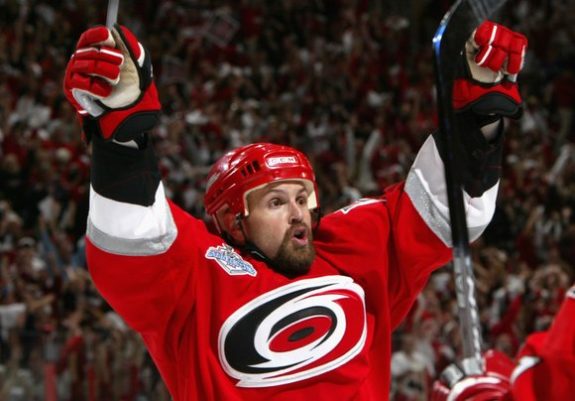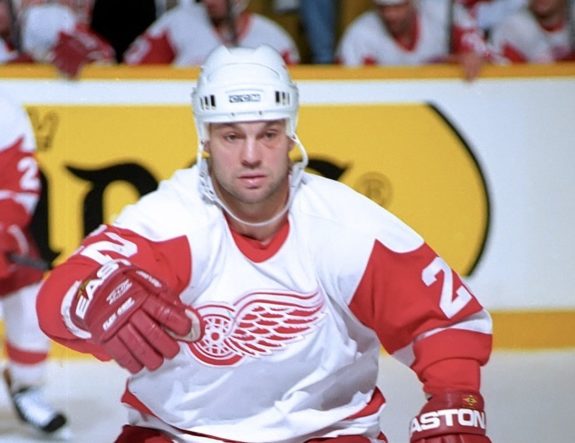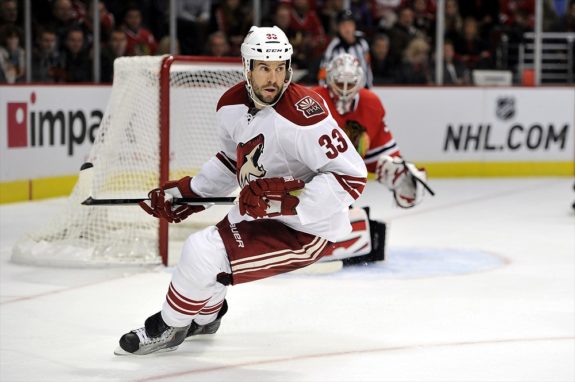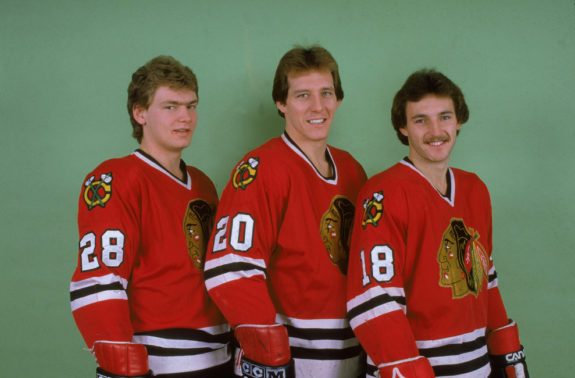Considering the powerhouse the Tampa Bay
Lightning have become, it’s easy to forget their early years. Or, at least,
it’s easy to want to forget, if you’re a fan.
From the Lightning’s first season in 1992-93, up until after the turn of the century, the Bolts struggled to put it mildly. They enjoyed a single playoff appearance in their first 10 seasons (1995-96), only winning their first round in 2002-03.
The Lightning then of course won it all the
following season in 2003-04. The sudden turnaround was due to the strength of a
powerhouse squad featuring the likes of Vincent Lecavalier, Martin St. Louis,
Brad Richards… and Cory Stillman???

Now, you probably remember Stillman as a member of the Lightning, but maybe not how critical to their success he actually was. He actually scored 80 points that season.
Stillman’s story, in which he played a single season for the Lightning is far from unique. In fact, Lightning history is filled to the brim with players who made brief stopovers with the team before moving on, players you may not recognize as ever having worn the jersey at all.
It would seem that, as easy it is to forget
how bad the Lightning once were, it’s even easier to forget many of the
impactful players who once suited up for the now-great franchise. You could
probably ice an entire, competitive starting lineup of them.
Challenge accepted.
6. Wendel Clark (LW)
Toronto Maple Leafs great Wendel Clark admittedly bounced around the league a lot. Everyone knows that, but it’s still probably more than you recall. His 65-game stint with the Lightning in 1998-99 was brief, but, surprisingly, it’s actually the second-most amount of games he played for a single team (even more than the 58 with the New York Islanders). A classic case of the right guy, but wrong jersey.
Regardless, Clark, who signed with the Lightning as a free agent, gets the nod at left-wing over a guy like Gary Roberts (2008-09) for a few reasons here. Sure, they would both provide toughness to our lineup, but Clark still had a few seasons left in his career as a 32-year-old when he played for the Lightning. Clark also scored a relatively impressive 28 goals and 42 points. Roberts only mustered seven points for the Lightning over what would be the final 30 games of his career in 2008-09.
5. Dino Ciccarelli (RW)
There were a few options here, but Dino Ciccarelli
is undeniably the right choice. He brings the ability to both score and get
under opponents’ skin as the top right-winger on this team.

Ciccarelli’s ex-Minnesota North Star
teammate Brian Bellows also has a claim due to the length of his stay (86 total
games over two seasons, 1995-97). However, it may surprise you to know
Ciccarelli’s stay with the Lightning also lasted two seasons (1996-98).
The only difference is Ciccarelli was more
prolific, even as a 37-year-old, scoring 35 goals and 60 points in his first
season with the Lightning, to whom he was traded by the Detroit Red Wings in
the summer of 1996.
Furthermore, simply put, Ciccarelli is a Hockey Hall of Fame legend. Mark Recchi (2008-09), who is also in the Hall, meanwhile gets edged out, because his tenure was shorter, and, because it was more recent, it is probably easier to remember (albeit slightly).
4. Adrian Aucoin (RD)
Defenseman Adrian Aucoin’s time with the Lightning in 2000-01 marked the awkward transitional phase between his days with the Vancouver Canucks and Islanders. He was traded to the Lightning from the former and then by the Lightning to the latter all in the same season.
Coincidentally, those are arguably the two
teams for which he’s known most for playing, though he did also spend time with
the Chicago Blackhawks, Calgary Flames and the then-Phoenix Coyotes before
finishing up his career with the Columbus Blue Jackets with 36 games played in
the lockout-shortened 2013 season. Still, Aucoin played just 26 for the
Lightning, the lowest amount he accumulated with one team.

So, why Aucoin?
Part of it is admittedly slim pickings
according to the established criteria for this piece. However, Aucoin was
nonetheless moderately prolific during those 26 games, scoring 12 points (one
goal). As far as power-play-capable blue liners go, Aucoin was a pretty decent
quarterback in his day too, another fact that also falls by the wayside when
talking about his career, as he scored 121 goals in 1,108 games.
3. Mattias Ohlund (LD)
The last spot on defense coincidentally
goes to Aucoin’s ex-Canucks teammate, Mattias Ohlund… Just almost a decade
apart in terms of when they each actually played for the Lightning.
Ohlund signed as unrestricted free agent in 2009 to serve as a Swedish mentor to the just-drafted Victor Hedman. While that makes Ohlund the player with the most recent stint on this list, it wasn’t particularly memorable.

Sure, he signed on for seven seasons ($25.25 million), but his time with the Lightning was cut short due to injury and he only played for two seasons. His days with Lightning thus tend to fade from public consciousness.
Ohlund’s (lack of) production also doesn’t help. He failed to score a single goal in his 139 games with the team, after all (18 total points). He nevertheless served as a steadying defensive presence, and every starting lineup needs one of those.
2. Bill Ranford (G)
The starting position in net iss probably
the hardest to decide.
Hockey fans can probably rattle off a list
of the top starters in Lightning history: Ben Bishop, Nikolai Khabibulin… even
Daren Puppa. While there are plenty of goalies, notable goalies even, who slip
under the radar as former Lightning players, few rarely stayed longer than to
enjoy a cup of tea with the team.
In terms of length of tenure, ex-Canucks
starter Dan Cloutier probably has the inside track. He played for the Lightning
over two seasons from 1999-2001). Alas, he was never anything other than an
average starter in his career. In terms of notoriety, Olaf Kolzig did win a
Vezina Trophy (2000), but the eight games he played for the Lightning in
2008-09, were the last in his career, too few in number, far from his best and
arguably too recent to justify including him on this list.
Ultimately, longtime Edmonton Oilers starter Bill Ranford is the logical choice. Granted, he only played 32 games for them in 1998-99 and his stats line is pretty horrible (3-18-3 with a 3.90 goals-against average and .881 save percentage). However, his time with the Lightning is sandwiched in between decent stints statistically speaking with the Detroit Red Wings and Capitals, from whom he was traded during the 1998 offseason (coincidentally following the emergence of Kolzig).
In other words, it was more the Lightning
and less Ranford. As a former Stanley Cup champion and Conn Smythe Trophy
winner, he also brings a greater degree of clutch play to the position than any
other possible choice.
1. Denis Savard (C)
Everyone remembers Denis Savard during his
time with the Chicago Blackhawks. Everyone also most likely remembers how the
Montreal Canadiens traded for him too. After all, not only did the Canadiens
trade away Chris Chelios to get him in 1990, but the Habs acquired him, in part
righting an old wrong after passing over they Francophone star to pick Doug Wickenheiser
No. 1 overall in 1980.

Savard also infamously served as a healthy
scratch down the stretch during the Habs’ 1993 Stanley Cup run. As a result,
some fans may understandably assume that’s where it ended for the Hockey Hall of
Fame inductee (2000), but he did in fact play four more seasons, three and
change of which were back with the Blackhawks where he returned to retire.
If you’re a Blackhawks fan, you remember
that part at least. However, you probably forget the season and half in between
with the Lightning, with whom he had signed as a free agent after the
Canadiens’ Cup win. Nevertheless, it happened… and Savard wasn’t half-bad, compiling
63 points (24 goals) in 105 total games with the Bolts.
Admittedly, as the Habs had deduced, Savard had lost a step. For a team finding its way like the Lightning entering their second season, his leadership was well worth the investment, though. For the purposes of this piece, there can equally be no other choice (at No. 1 overall, like he should have been originally).